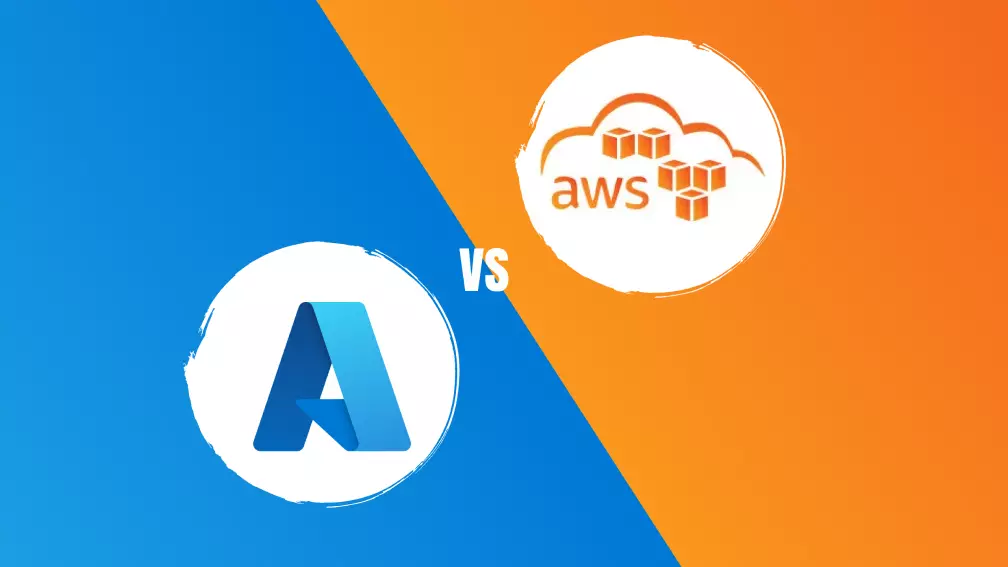5 Main Types of SDLC Models: Overview
What are the most effective and productive software development models, and which is the best for you?

5 Main SDLC Models: Which One Is The Best?
FOne of the fundamental notions of SDLC is the model. An SDLC model serves as the basis of development and should be adapted to the team, project, and product requirements. There are different models, each of them having its strengths and weaknesses. In this article, we will get acquainted with the main types of SDLC models, their specifics, positive and negative sides.
SDLC: Overview
The process when you plan, create, test, and launch the software is called the Software Development Life Cycle. Basically, it is a development plan that consists of various stages. First of all, let’s have a quick look at the main stages of the software development lifecycle:
- Consulting
- Planning and requirements
- Design
- Architecture
- Coding
- Implementation
- Test and launch
If you want to get more information about the main stages of custom software development, read this article.
Waterfall model
The waterfall model is the earliest and the simplest of all the SDLC methodologies. The whole software development process is separated into phases, each phase beginning only when the previous one is completed. Every stage has its own project plan and relies on the information from the previous stage. The main SDLC stages of this model include gathering and analyzing the requirements, system design, implementation, testing, deployment, and launch. Such a model is widely used in software development as it is simple to plan and manage. The process is also strictly documented and the processes and outcomes of each stage are clearly predefined.
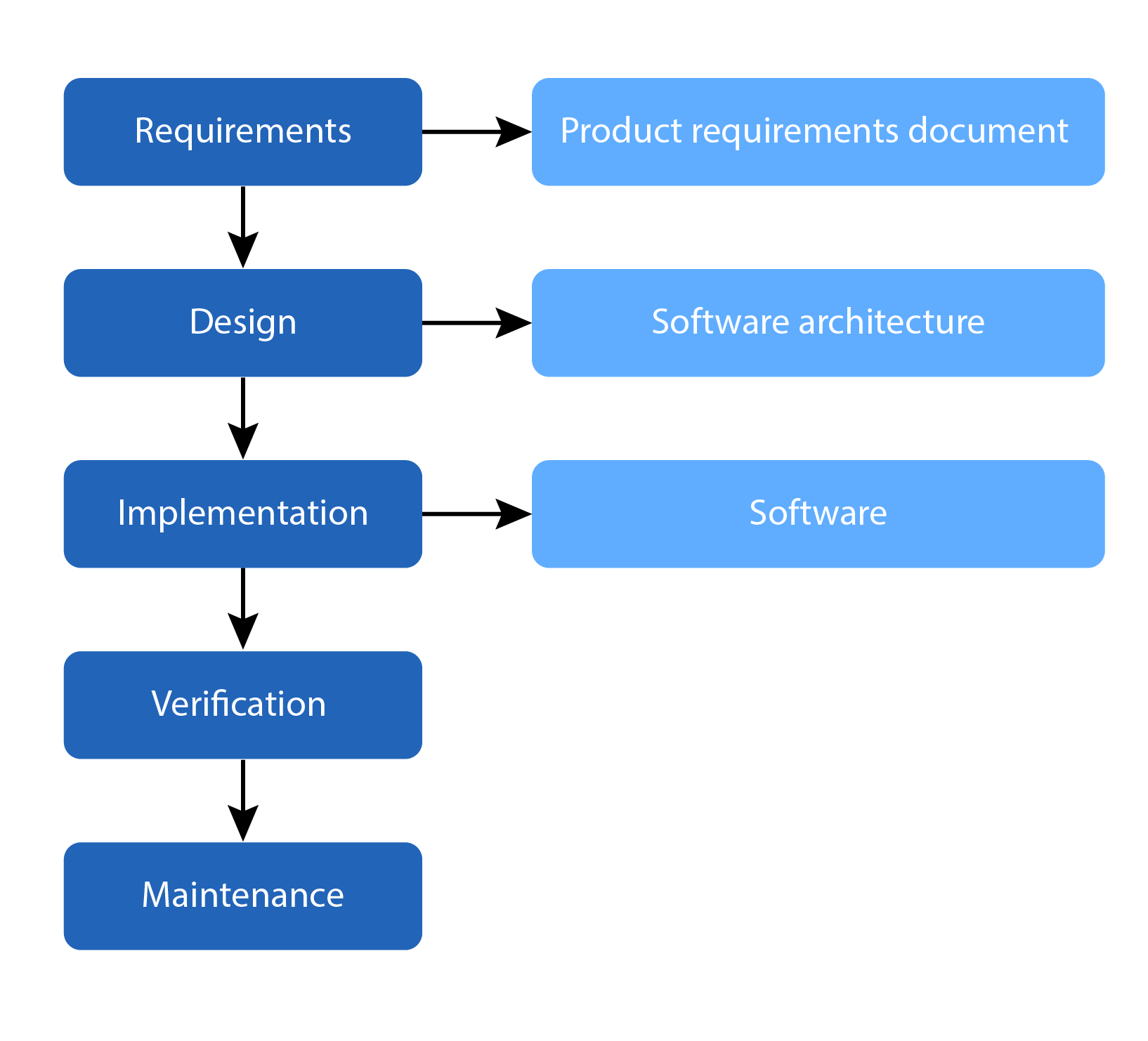
When to use the waterfall model? Each project is individual and the chosen SDLC model needs to correspond to the various inner and outer requirements. The waterfall model will be most suitable when:
- The project requirements are clear, unambiguous, and detailed
- The product definition is stable
- The tech stack is predefined and not dynamic
- Extensive resources with the necessary expertise are available
- The project is short
Advantages of the waterfall model:
- Theprocessesare handled and completed one by one and there are no overlaps.
- The key points are easy to define
- Setting the task priorities is effortless/li>
- Easy to plan the development budget and time
- Works great for smaller or middle-size projects where the requirements are quite transparent
Disadvantages of the waterfall model:
- Not suitable model for complex, long, and object-oriented projects
- The product is integrated at the very process end
- The team can’t identify the possible problems beforehand
- The progress of every stage is hard to measure
- It is not suitable for projects that have changeable requirements
- Adjusting the scope during the lifecycle may cause problems
- High risk and uncertainty amount
Agile model
This software development life cycle model is considered a very practical one. It divides the project into cycles with short time limits which enables the quick delivery of a running product. At the end of each cycle, the product is tested. This SDLC methodology is the most widely used alternative of the waterfall one. Being a cycle model, it enhances the interactions between different development team members. It is also highly dependent on the interactions between the development company and the customer. The agile model is based on the adaptive approach that doesn’t require thorough planning. The developers adjust the process to the changing product requirements.
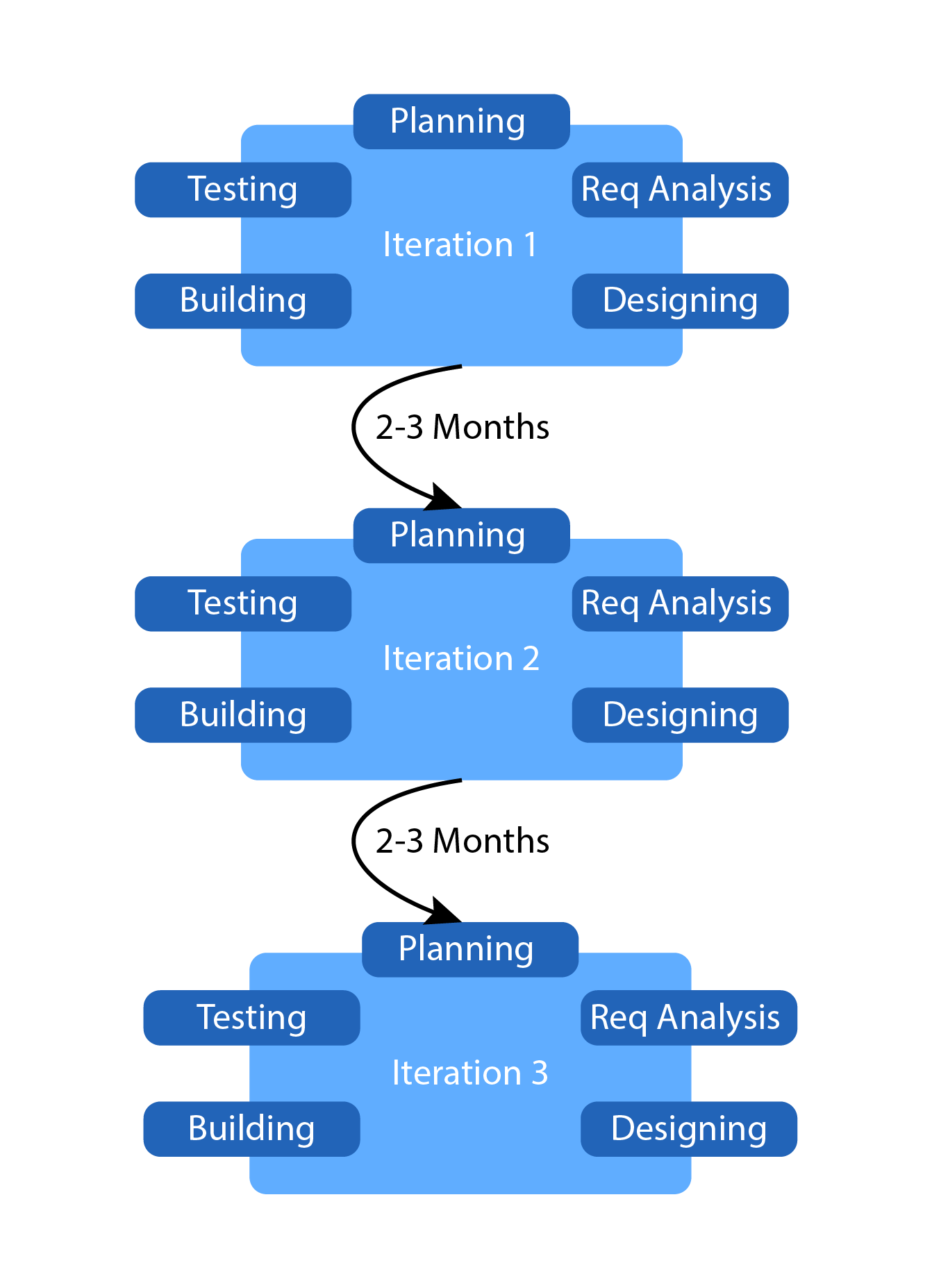
When to use the Agile model?
The Agile model is getting more and more popular because of its adjustability and adaptivity. It is appropriate in such cases:
- The changes need to be implemented
- The project requirements aren’t well-thought
- More attention to risk management is required
- Project requires more freedom in time and actions
Advantages of the Agile model
- Rolling back to the previous stages requires little time and cost.
- Gives the developer team more flexibility
- The iterations are short and clear
- Due to the project flexibility, the risks are minimized
- The first operating product version is released quickly
- Minimal resource requirements
- Enhances the teamwork and cross-training
Disadvantages of the Agile model
- The final product cost is difficult to measure
- New changes may not interact with the developed architecture
- The development team should be expert and customer-oriented
- The final product may be delivered later than the scheduled deadline
- Highly relying on customers, who can drive the project to a bad turn.
V-shaped model
V-shaped SDLC model is an extended waterfall model, in which the testing (verification) and development (validation) stages go parallelly, the testing stages correspond to certain development stages. This model has a strict plan and like in a waterfall model, the next stage doesn’t begin until the previous one is finished. According to this model, testing is done hierarchically and every stage has a certain deliverable. Errors are easy to detect at the early stages.
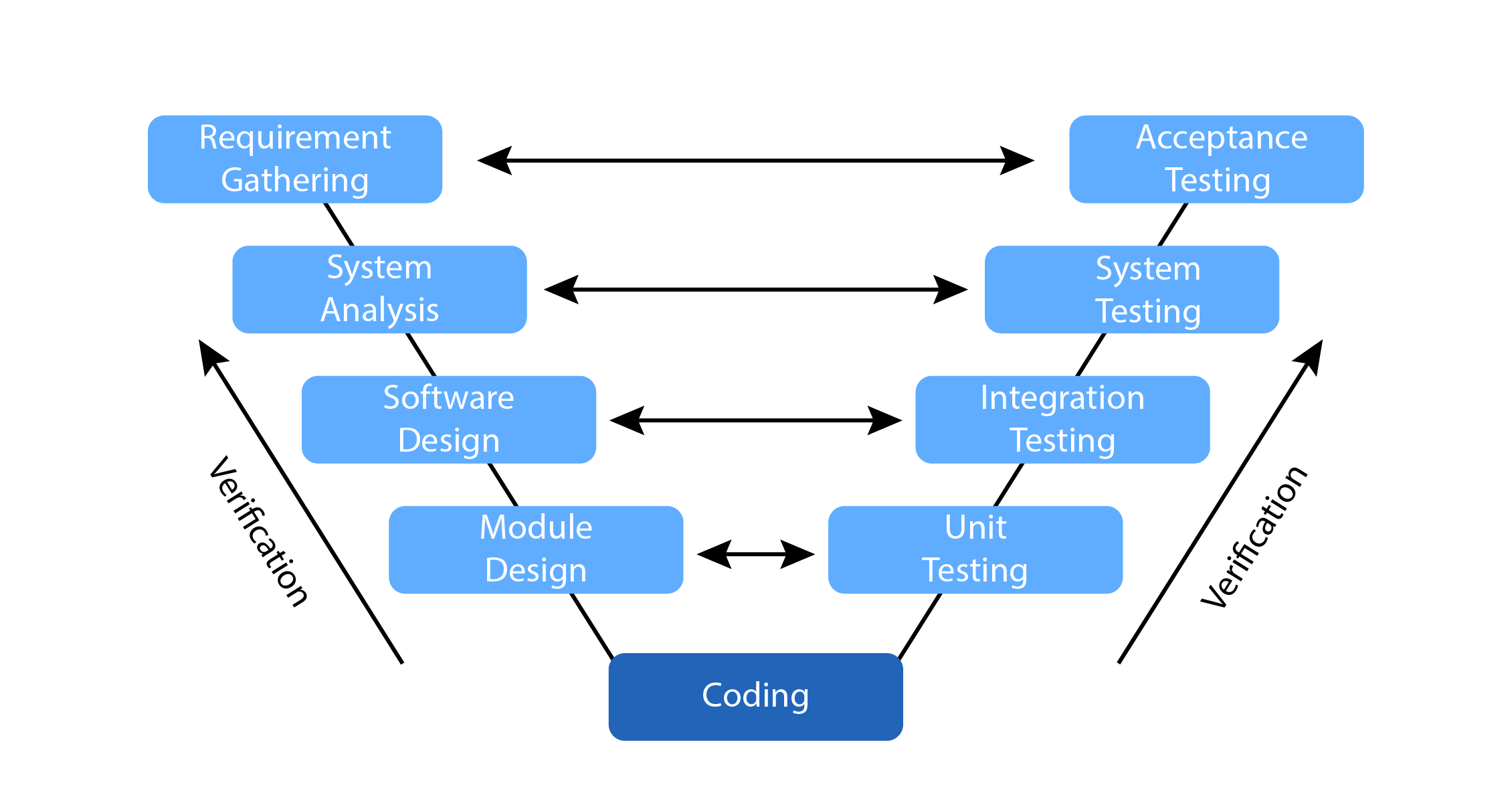
When to use a V-shaped model?
This model emphasizes the testing activities and enhances the probability of delivering a high-quality and error-free product. V models is the best pick when:
- The project is small and all the requirements are clear
- Qualified software engineers, especially testers are available
- The project requires thorough testing
- Exhaustive technical resources are available
Advantages of V-shaped model
- Each stage has definite outcomes so it is easy to manage
- Phases are completed one by one
- Testing is performed in the early stages
- Clear and easy-to-use
- Project management and tracking results are simple.
Disadvantages of V-shaped model
- Not flexible
- Relatively high risks
- Phase iteration is not supported
- Clear and easy-to-use
- Handling concurrent events is difficult
Spiral model
According to the spiral model, the software development life cycle is divided into repetitive architecture and prototyping stages. The main problem of this SDLC model is to find the right moment to move on to the following stage. Every stage encompasses such phases as: planning, risk analysis, engineering and testing, and evaluation. These stages are repeated multiple times until the product is ready. For now, it is one of the most flexible methodologies that gives developers much freedom to create a highly personalized product. Shifting to the next stage is done even if work on the previous one is not completed.
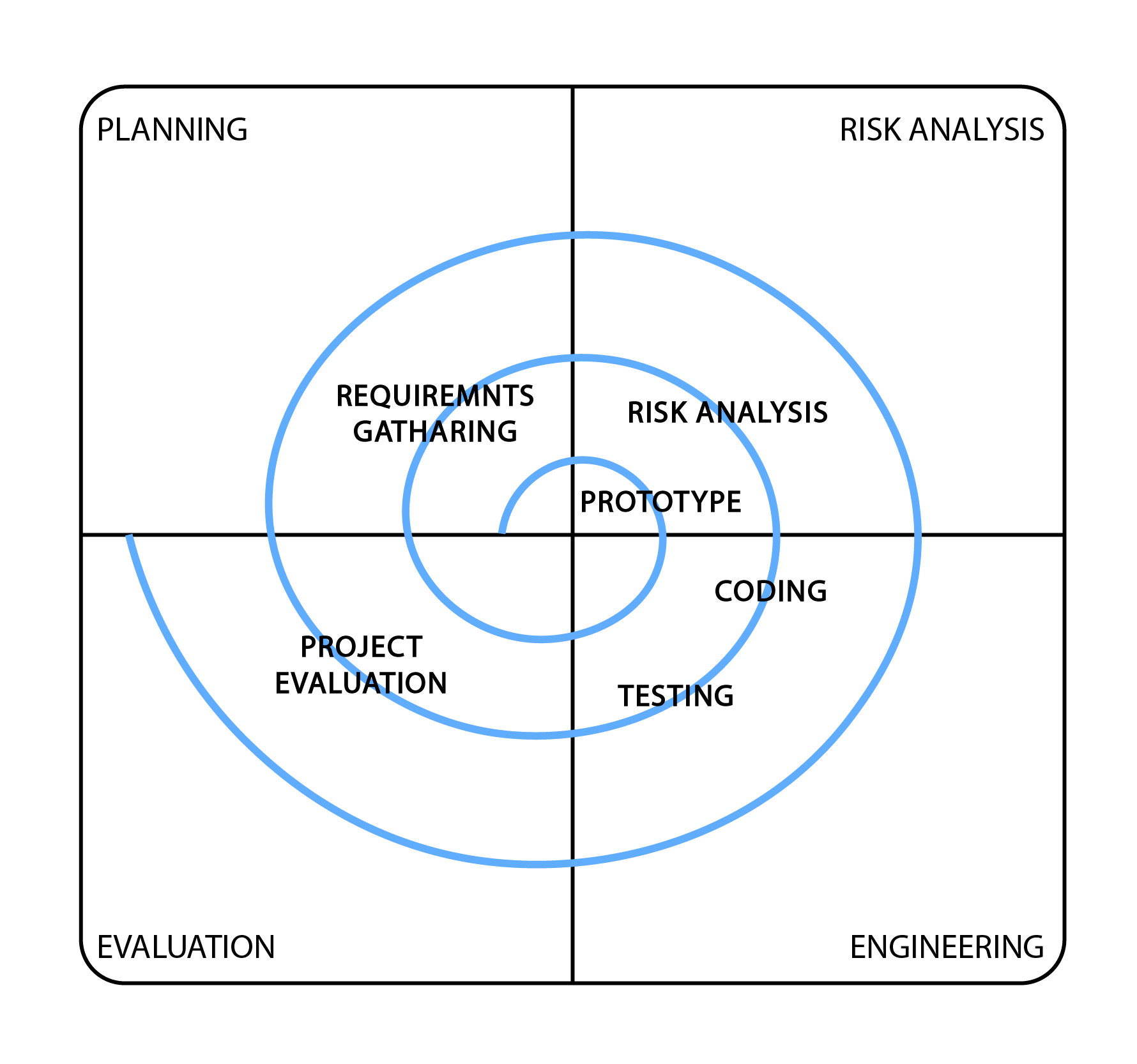
When to use the spiral model?
This model is popular for software development because of its enhanced risk reduction and Here are the cases when the spiral model is the most appropriate:
- The budget is limited and risk evaluation is significant
- The customer is not sure about the project requirements
- The projects with high-risk level
- Projects with complex requirements
- For long-lasting projects according to the possibility of changes
- Customer feedback is essential, especially for new product lines
- The user needs are not defined
Advantages of the Spiral model
- Adjustability to changing requirements
- Enables wide usage of prototypes
- The system is delivered to the users early
- The riskiest parts of SDLC can be managed more thoroughly
Disadvantages of the Spiral Model
- Complex management
- Could be costly for small or low-risk projects due to change implementation
- Spiral many continue indefinitely
- The project end is hard to foresee
- A lot of small stages need exhaustive documentation support
Big Bang model
This model is something out-of-the-box in software development. Its highlight is that there isn’t any specific process developers have to follow. There is the only stage - bang, which means starting the project immediately. Even the customer requirements are not clearly defined according to this model. As a rule, there are one or two developers working on the project. It may seem chaotic, but it works for small projects by saving time, energy, and cost on the initial stages.
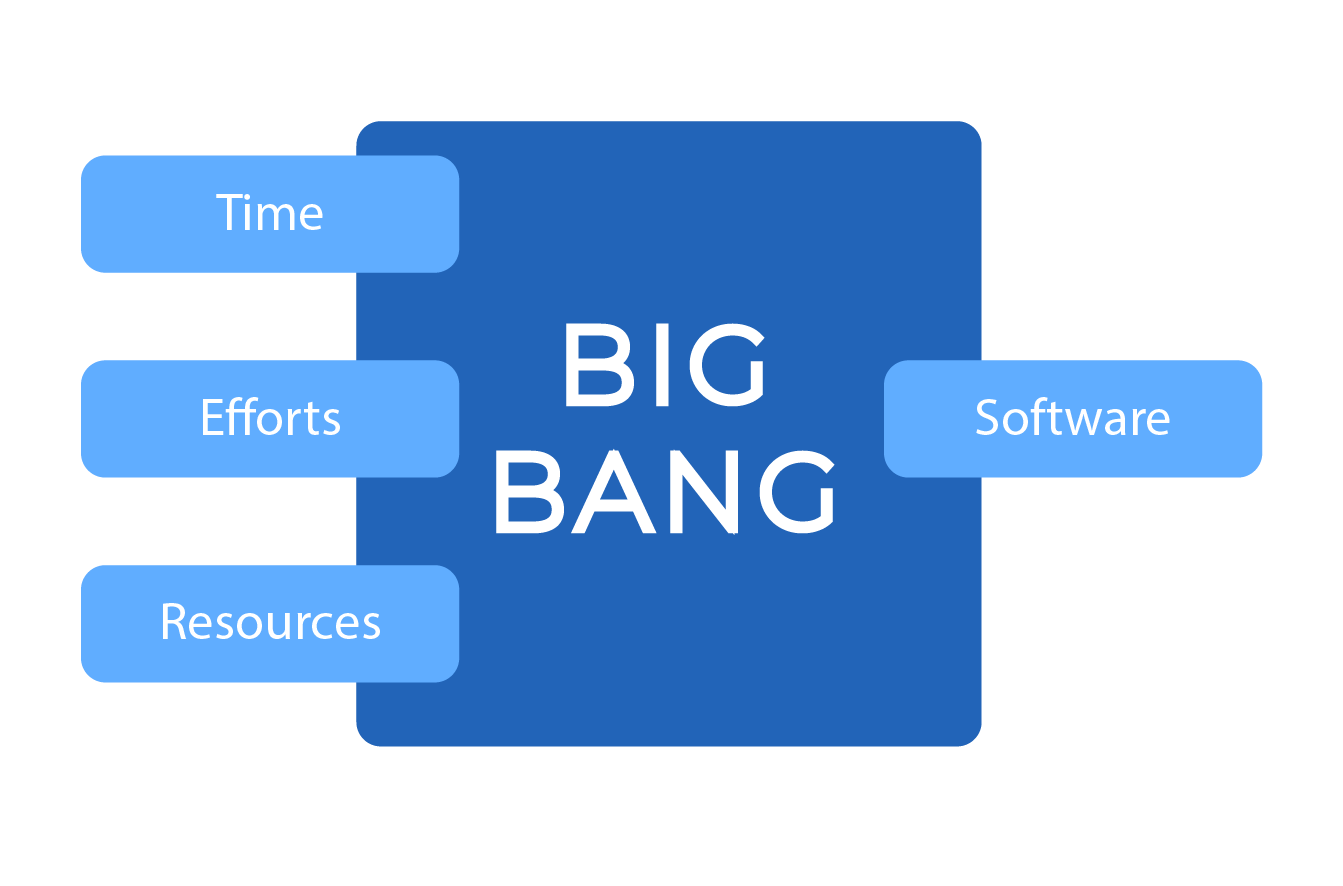
When to use the Big Bang Model?
This model is highly flexible and gives developers an opportunity to start working on a project right away. In these cases, the use of the Big Bang model will be the most beneficial.
- The project is small and practical
- The developer team is small (one or two software engineers)
- The release date is not defined by the customer
Advantages of the Big Bang Model
- No planning required
- Few resources necessary
- Simple and flexible for developers
- Is aimed at fast product delivery
Disadvantages of the Big Bang Model
- Too easy for complicated projects
- High risks of misunderstanding
- Can get very expensive if the requirements are not clear
- The project can be restarted if there are misunderstandings
How to pick the right life cycle model for your software development project?
Now that you know the main SDLC models, let’s talk about choosing the most suitable one for your development project. Here are the main criteria to take into account:
- team size and their expertise
- necessary technology
- team location
- project type and size
- the need for risk management and quality assurance.
Conclusion
During the evolution of SDLC, different models emerged from the basic waterfall methodology to meet various requirements and expectations. There is no all-purpose model that works well for all projects, conditions, and cost requirements. Each model has a unique set of actions that ensure the development process’s success. We hope this article sheds more light on various SDLC models available.


